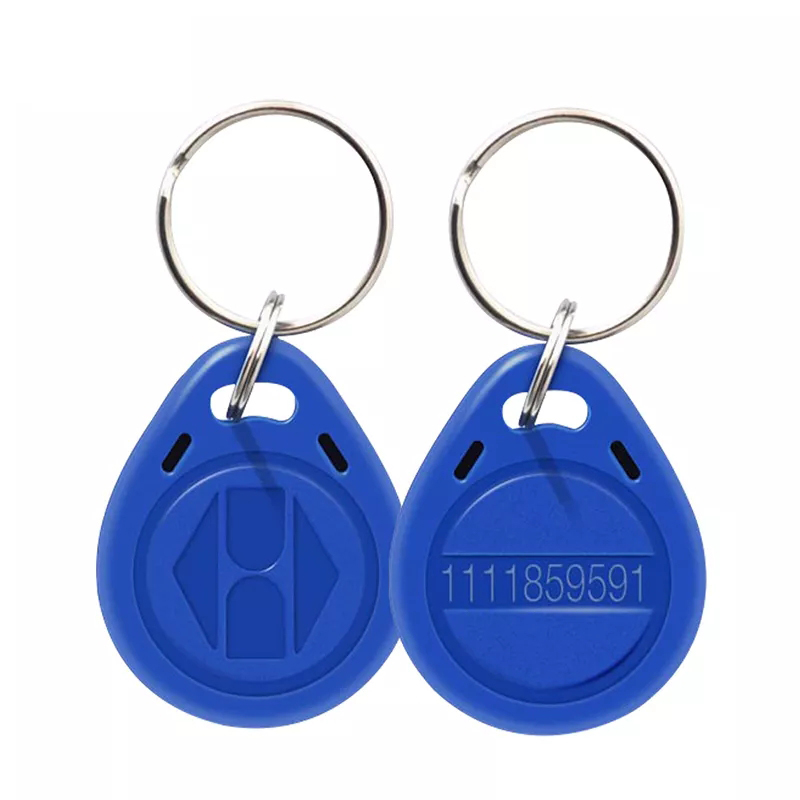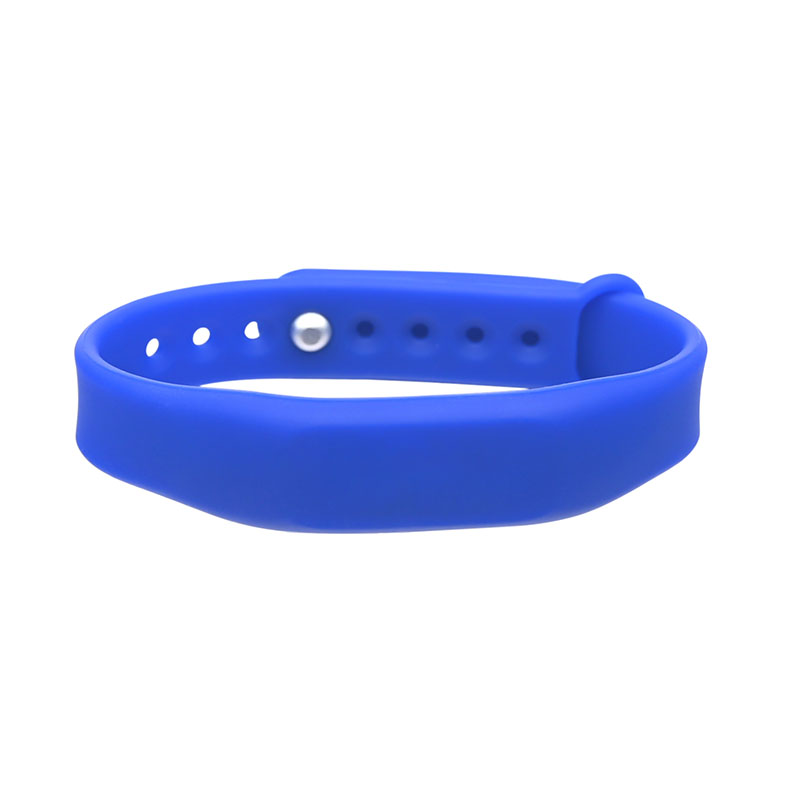
1. Introduction: The Ongoing Challenge of Child Safety
In an increasingly complex social environment, the issue of missing children continues to occur with alarming regularity—especially in public venues such as shopping malls, parks, schools, amusement parks, and transportation hubs. Even a brief lapse in attention can lead to potentially irreversible consequences. While traditional methods such as holding hands, child leashes, or public announcements offer limited support, they are often slow to respond, imprecise in location, and overly reliant on human judgment—making them insufficient for today's heightened safety expectations.
The rise of emerging technologies like the Internet of Things (IoT), wireless communication, and artificial intelligence has ushered in a new era of intelligent child safety solutions. Among these, Radio Frequency Identification (RFID) stands out due to its non-contact, low-power, and highly stable capabilities. RFID technology has become a cornerstone of modern child safety wearables, enabling real-time location tracking, boundary alerts, and automated behavioral analysis.
This article provides a comprehensive overview of RFID child safety wristbands, covering their technical principles, operating mechanisms, structural components, application scenarios, market trends, advantages and limitations, as well as critical considerations for privacy and data protection. It serves as a professional guide for families, educational institutions, and safety-focused technology developers.
2. RFID Technology Overview
2.1 What is RFID?
RFID (Radio Frequency Identification) is a wireless, non-contact identification technology that uses electromagnetic fields to automatically identify and track tags attached to objects. Unlike barcode scanning, RFID does not require line-of-sight and can operate reliably in various environmental conditions.
An RFID system typically includes three components:
Tag: A small device composed of a chip and antenna, containing a unique identifier.
Reader: A device that emits radio waves to activate and read the tag data.
Backend Management System: A cloud or local platform for data processing, alert handling, and behavioral analysis.
This triad enables efficient real-time personnel tracking, particularly in semi-enclosed spaces such as schools, shopping centers, or amusement venues.
2.2 RFID Frequency Bands
RFID systems are categorized by frequency:
Low Frequency (LF) (125–134 KHz): Short-range, interference-resistant; suitable for proximity identification.
High Frequency (HF) (13.56 MHz): Medium-speed with a read range up to 10 cm; widely used in access cards and metro tickets.
Ultra High Frequency (UHF) (860–960 MHz): Long-range, supports real-time and large-scale monitoring; ideal for logistics and child tracking.
Microwave RFID (2.45 GHz): High-speed, used in precise real-time applications.
In child safety applications, UHF RFID is most commonly adopted due to its long-range and low-latency capabilities, especially in dynamic or expansive environments.
3. How RFID Child Safety wristbands Work
RFID child safety wristbands operate by embedding a tag in a wearable device. When deployed within an area covered by RFID readers, the system enables real-time location monitoring, behavioral tracking, and geofence-based alerts.
3.1 Data Collection and Identification
As the child enters a monitored area, the RFID reader periodically scans for active tags. Each tag ID corresponds to a child’s profile stored in the backend. The system verifies the identity and logs the location data in real-time.
3.2 Geofencing and Area Management
Custom-defined virtual boundaries can be established. If a child crosses the designated area, the system triggers an immediate alert to caregivers or security personnel. These geofences can be geographical zones or functional access permissions (e.g., restricted rooms).
3.3 Behavior Tracking
The RFID system can log a child’s movement history—entry times, zone dwell duration, activity frequency—allowing for pattern analysis or incident tracing.
3.4 Power and Malfunction Alerts
High-quality wristbands integrate battery monitoring, voltage fluctuation detection, and disconnection alerts. If the device experiences any malfunction, the system sends real-time notifications via SMS, push message, or email.
A robust RFID wristband involves more than a simple tag—it integrates hardware and software components that work in unison:
4.1 RFID Chip
Each chip contains a unique ID and may support read-only or read/write functions. Some advanced models store additional parameters like body temperature or activity data.
4.2 Flexible Antenna
To withstand daily movements and physical stress, wristbands often use flexible antennas—made of copper foil or printed conductive ink—to ensure stable signal transmission.
4.3 Battery and Power Management
Active RFID wristbands require power. Lithium-polymer or coin cell batteries are common, with capacities ranging from 50mAh to 200mAh. Power-saving features such as scheduled wake-up and deep sleep modes extend battery life. Redundant backup power designs are also emerging in premium models.
4.4 Communication Modules
In addition to RFID, some wristbands integrate Bluetooth Low Energy (BLE), NFC, or Zigbee modules for mobile app pairing, real-time alerts, and cloud synchronization.
4.5 Casing and Wearability
Key requirements for the outer shell include:
Material safety: Skin-friendly silicone or TPE.
Shock resistance: Durable and child-proof.
Adjustable fit: For different wrist sizes.
Anti-removal design: Secure clasps or tamper-proof locks.
Color coding: For classroom or area identification.
4.6 Waterproofing and Dust Protection
Most premium models comply with IP65 or IP67 standards, offering reliable resistance to dust, sweat, and light water exposure.
5. Application Scenarios
5.1 Schools and Kindergartens
RFID wristbands streamline attendance tracking, recess supervision, and student handover processes. Integration with CCTV allows for visual verification in emergencies.
5.2 Shopping Centers and Events
In crowded places, RFID systems help locate missing children quickly and notify parents via mobile apps or help desk alerts.
5.3 Amusement Parks and Restaurants
RFID-enabled wearables can interact with games or access control systems. They may also be used for automated check-ins, activity logs, or child-friendly billing services.
5.4 Hospitals and Special Needs Institutions
For children with autism or developmental disabilities, RFID wristbands provide 24/7 monitoring and instant alerts, reducing the risk of wandering incidents.

6. Advantages and Limitations
6.1 Key Advantages
Non-contact operation: Ideal for mobile and active environments.
Real-time tracking: Accurate and responsive positioning data.
Low power consumption: Long-lasting for daily use.
Privacy protection: Unlike cameras, RFID does not capture visual data.
Scalability: Easily integrated into IoT or AI platforms.
6.2 Limitations
Coverage range dependency: Blind spots may occur in open or complex areas.
High infrastructure cost: Requires multiple readers and backend setup.
Battery maintenance: Device may stop working if power runs out.
Signal interference: Crowded frequencies can cause data collisions.
7. Security and Privacy Concerns
Privacy is paramount when dealing with children's data. Measures include:
7.1 Encrypted Data Transmission
Advanced systems use AES or DES encryption, with some tags featuring rolling code protocols to prevent spoofing or unauthorized access.
7.2 Access Control and Authorization
Role-based access ensures only authorized personnel can view sensitive data. Two-factor authentication further protects backend systems.
7.3 Localized and Minimal Data Storage
Minimalism reduces risk: only essential data is collected and stored. Systems can implement periodic data purging to enhance security.
7.4 Parental Consent and Transparency
Before activation, clear consent forms should explain the data scope, retention policy, and usage conditions to guardians or parents.
8. Future Trends
8.1 Hybrid Positioning Technologies
Combining RFID with GPS, BeiDou, Wi-Fi triangulation, and BLE Beacons can ensure seamless indoor and outdoor tracking.
8.2 AI-Based Behavior Prediction
Machine learning models may detect unusual behavior patterns or deviations in movement, enabling predictive alerts before incidents occur.
8.3 Integration with Smart Campus Platforms
RFID wearables could function as all-in-one student IDs—supporting payments, library borrowing, attendance, and access control.
8.4 Sustainable Design
Eco-friendly materials and recyclable batteries will support green manufacturing practices and long-term sustainability.
8.5 Multilingual & Cross-System Compatibility
Future wristbands will support multilingual interfaces and global communication protocols, expanding their use in international settings.
9. Conclusion
RFID child safety wristbands represent a meaningful convergence of technology and caregiving. By enabling real-time identification, location tracking, and automated alerting, these wearables significantly reduce the risks associated with child disappearance and help build a safer environment for growth and exploration.
While current limitations exist in terms of cost, infrastructure, and privacy concerns, ongoing technological innovation is rapidly improving these areas. For families, schools, and safety-oriented institutions, adopting RFID child safety solutions is not only a step toward digital transformation but also an investment in peace of mind and the well-being of children.
Why choose us?
Established in 2010 – Over a decade of RFID experience
Full customization – RFID cards, wristbands, key fobs, and smart devices
High quality – ISO-compliant materials (ISO 14443, ISO 15693)
Secure solutions – Encrypted protocols and data protection
Flexible scalability – From startups to enterprise-level projects
Contact us today to learn how we can help streamline your inventory management with reliable, smart RFID solutions.






